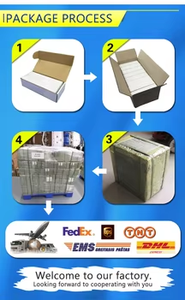
All categories
Featured selections
Trade Assurance
Buyer Central
Help Center
Get the app
Become a supplier

(461 products available)














































Restaurants are now adopting the table tracker technology in their service delivery. This technology has helped to track and monitor the status of tables in real time. Table trackers come in different types, including:
Tabletop trackers
These are trackers placed on top of the table. They are designed to display the status of the table to the staff. Some may have lights that indicate the status of the table, such as whether customers are waiting for service or if the table is available. They help to minimize the time the wait staff take to identify tables that need attention. This improves service delivery and increases turnover.
Handheld trackers
These are portable devices that are carried around by the staff. They track the status of tables and provide updates. They usually have displays that provide real-time information. With this information, the staff can identify which tables need service. They also allow the staff to update the status of the table manually.
Mobile application trackers
Some restaurants have adopted the use of mobile applications to track tables. With these applications, the restaurant can track the status of tables. The application will provide updates and notifications regarding table status. This enables the staff to monitor the status of the tables.
Integrated POS system
Some restaurants have POS systems integrated with table tracking functionalities. This allows the staff to manage orders and track tables. The integrated system provides a centralized platform with real-time updates on the status of tables.
Wireless communication technology
These are technologies used by table trackers to communicate with the restaurant staff. They enable communication between the table trackers and the central system. This ensures that the staff gets real-time updates on the table status.
Regular Software Updates
To keep their software up-to-date and compatible with the Table Tracker 4 system, users should often check for updates and install them as soon as possible. This guarantees that all components of the system work together flawlessly, improving performance and stability.
Data Backup
Users should routinely back up their data to protect it from loss. In the event of a system failure or unforeseen event, this backup enables the recovery and continuation of operations, preserving the integrity and continuity of critical data.
Regular Hardware Maintenance
Users should periodically inspect the Table Tracker 4 hardware components for any signs of wear, damage, or loose connections. This proactive approach helps identify and address potential issues to ensure optimal performance and reliability of the system. Additionally, users should clean the hardware components regularly to remove dust and debris, preventing the accumulation of particles that could affect their performance.
Environmental Considerations
Users should position the Table Tracker 4 components in an environment with appropriate temperature and humidity levels. Extreme conditions can impact the performance and longevity of the equipment. Furthermore, users should ensure sufficient space around the components for adequate ventilation, reducing the risk of overheating and associated problems.
Power Supply Management
Users should employ a stable and clean power source for the operation of the Table Tracker 4 system. Power surges or interruptions can compromise the reliability and performance of the equipment. Additionally, users should utilize uninterruptible power supply (UPS) systems to safeguard against sudden power interruptions and provide backup power to sustain operations during outages.
Periodic System Checks
Users should carry out routine checks on the Table Tracker 4 system to guarantee that all components are functioning properly. This includes verifying the calibration of sensors, inspecting the operation of software and hardware components, and ensuring the connectivity of communication elements. Early detection and resolution of potential issues can prevent disruptions and maintain system efficiency.
Training and User Awareness
Users should ensure that all personnel involved in operating and maintaining the Table Tracker 4 system receive adequate training. This training should cover system functionality, operational procedures, and safety considerations. Additionally, users should promote awareness of best practices related to the use and maintenance of technology systems to optimize performance and minimize risks.
With many options for table trackers, it can be challenging to choose the right one. Here are some tips for selecting the right table tracking device for the business:
Here are the step-by-step instructions for replacing a table tracker 4:
Q1: Do table legs have to be the same color as the table?
A1: No, the table legs don't have to be the same color as the table. They can be different to create a contrast or to match other elements in the room.
Q2: Can a table be assembled without screws?
A2: Yes, a table can be assembled without screws. Other joining methods like gluing, doweling, or using brackets can be used to hold the parts together.
Q3: Are folding tables less durable than regular tables?
A3: Folding tables are not less durable than other ordinary tables. They are designed to be sturdy and support weight, although their legs may be less robust than fixed tables.